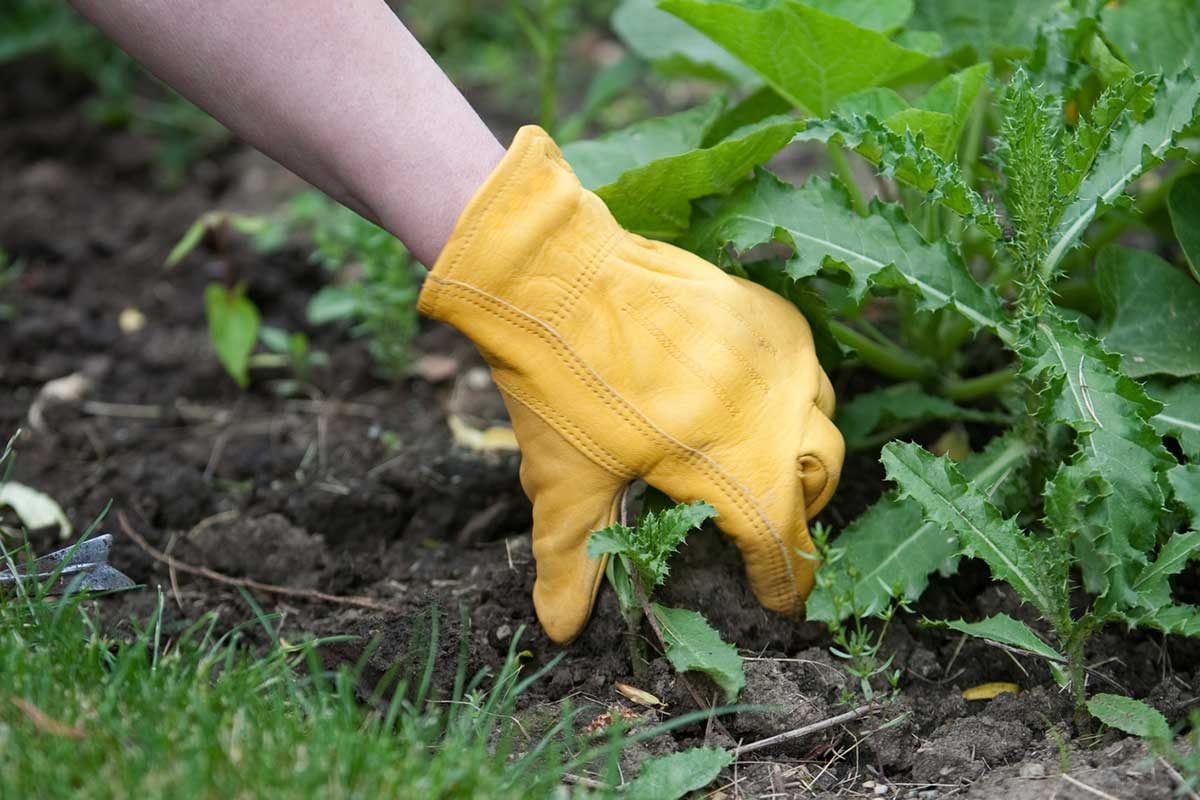Have you tried eradicating weeds in your yard and ended up with a bigger problem, like dead grass and flowers or chemical burns on your skin? Read on.

8 Common Mistakes People Make When Treating Weeds

It’s a cliché of sitcoms and comic strips: Fictional homeowners out in the yard eternally hand-pulling those unwanted plants that stubbornly pop up in flowerbeds and on lawns.
The chore became a cliché for a reason. Weeds pop up in all climates and growing conditions, and not everyone knows the right way to get rid of them. And despite the timeworn message, you don’t actually have to stamp out every single weed as if it’s on fire.
Weed control “is really a matter of personal preference,” says Dr. John Kauffman, regional technical manager for TruGreen lawn care. Because the definition of a weed is simply a plant growing where it’s not wanted, even something as charming as a wild violet may be considered a weed by some.
“One homeowner may have the expectation of no weeds at all, while another is quite pleased with them,” says Bob Mann, director of the National Association of Landscape Professionals.
But whether you’re treating one small patch of weeds or a sprawling area, there are numerous common mistakes to avoid. Here’s a look at some of them.
On This Page
Confusing Weeds With Plants You Want To Keep
Don’t laugh! Sure, some weeds are obvious, but others look similar to legit plants and flowers. Before you start weeding, consult a good plant book, such as Botany in a Day, or a digital resource. There also are plenty of plant-identification apps such as PictureThis that will help you determine what’s what.
Not Pulling the Entire Root
Dig deep when manually weeding. “If you don’t get the entire plant, there’s a good chance it’ll grow back,” Kauffman says. He notes that gardeners should try to pull out the entire root, but “sometimes we just can’t.”
Chris Lemcke, national technical director at Weed Man lawn care, notes dandelions especially need to be pulled properly. “Even removing a couple inches of root won’t kill it, as the dandelions can easily reproduce from the remaining root,” he says.
Trying To Manually Pull Every Weed
For weeds that do not regenerate from roots, Mann says manual pulling is a great idea. “Some plants are nearly immune to the effects of herbicides, making manual removal necessary if you want decent control,” he says.
However, don’t underestimate how much time and energy it will take to manually weed your yard. If it’s too much, you’re likely to quit partway through. Weeding is hard, repetitive work, often performed in uncomfortable heat.
“It is funny how even the smallest lawn turns into something the size of a golf course when you begin plucking weeds by hand,” Mann says.
Using Weed Killer Without Reading the Label
If you choose a chemical weed killer, don’t just open it up and start using it. “If you’ve ever asked a professional for advice, the one thing you’ll always hear is, ‘Read the label instructions. Follow them exactly,’ ” says Mann. “It’s all too easy to mess this up, so take the time to read.”
Kauffman agrees. “It’s not always exciting reading, but it is so very important,” he says. Some products are concentrated and must be diluted with water, or require a specific kind of applicator.
Spraying When It’s Windy
“We call the phenomenon of pesticides moving on the wind ‘drift,’ ” says Mann, adding that “pesticide” is an umbrella term that can also refer to herbicides.
“The problem with drift is that it can carry a pesticide to a place where we do not want it to be, such as sensitive plants around the foundation of your house,” he says.
Mann urges gardeners to read the label, which may indicate what the maximum wind speed can be to safely apply the product.
Not Wearing Protective Gear
In summer, many of us live in shorts, T-shirts and flip-flops or sandals. That’s fine for lounging with a book. But when applying weed killing products, you need to protect your skin from accidental exposure.
Mann notes that often the label on the product will advise users to wear long pants, a long-sleeved shirt, protective gloves and eye protection. The label will also advise you how long you should keep kids, pets and others off the lawn once it’s been treated.
Not Preventing Chemical Runoff
Runoff is chemical residue that moves from the treated area to a place where you don’t want it to go, such as neighboring waterways. “Again, reading the label and following the directions to prevent it from running off or making a product work effectively is important,” Lemcke says.
Mann advises paying attention to your weather forecast and avoid treating weeds when rain is expected.
Overkill
Since we’re on the topic of pesticides (and in this case herbicides!), the mistake that comes to the top of my head is “too many chemicals.” Even though we use herbicides to successfully control weeds in ornamental beds, they are not completely benign.
The desirable plants tolerate the presence of the herbicide while the undesirable plants do not. Thus, we get control of the dandelion and not the daisy. Using more than is recommended on the label, or too many different herbicides altogether, will have a significant effect on the health of your trees, shrubs and flowers.
Always have a plan when it comes to weed control. And always read, understand and follow the label directions.


















